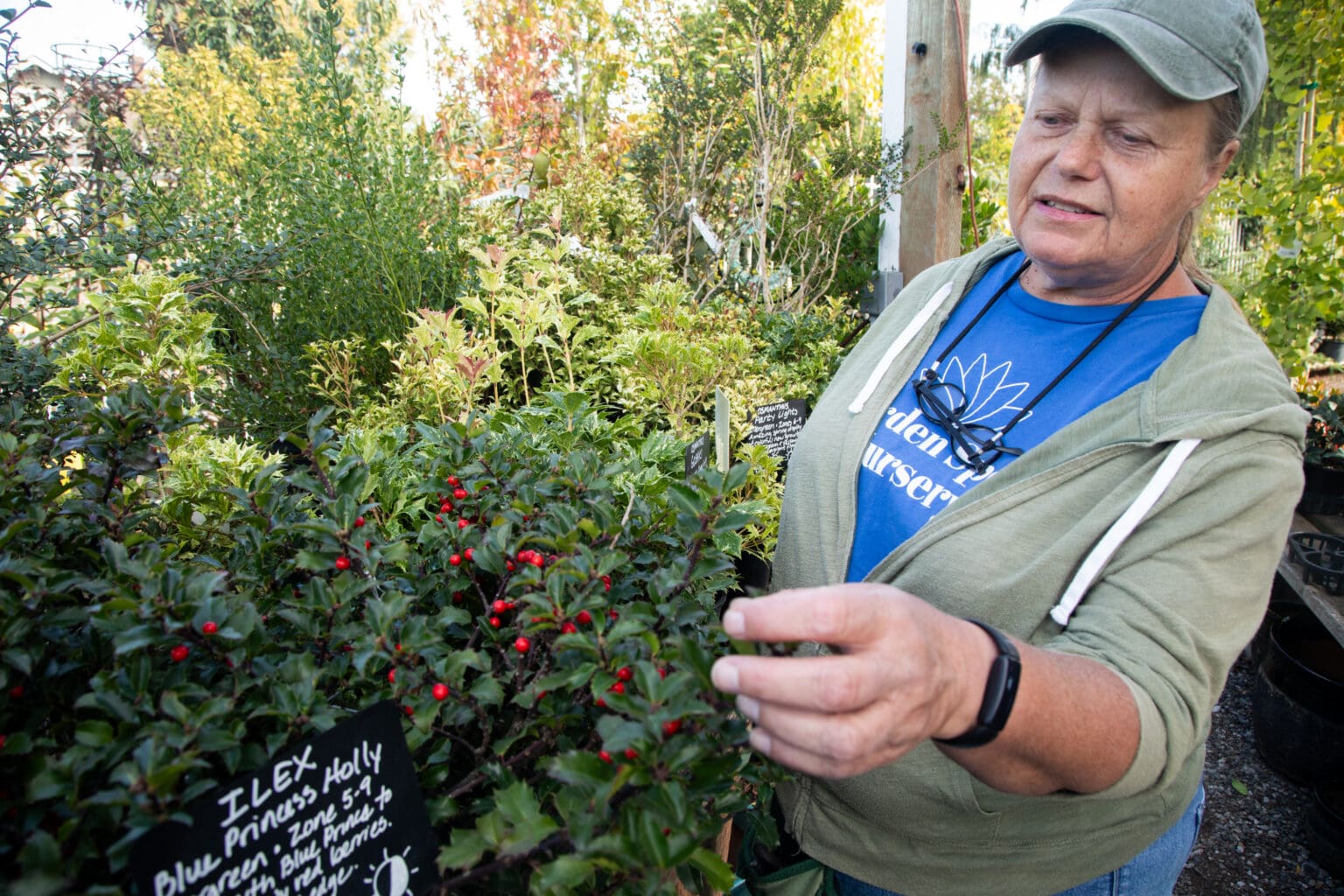Last weekend, I spent some serious garden time harvesting ripe tomatoes and cutting off their moldering leaves, sorting through loads (upon loads) of almost-too-ripe Italian plums, doing some desultory weeding and wondering for the millionth time why I’ve planted so many fast-spreading plants such as horseradish and lemon balm.
I also noticed the leaves of lilac and other bushes and trees are starting to drop and the lawn is making an effort to start getting out of control again as fall rains draw near.
Basically, I spent the last full summer weekend pretending autumn wasn’t just around the corner. Was I too late or too early to start planting fall color, and what did I need to do to prepare for winter?
For advice, I talked to Debra Olberg, who has been working at Garden Spot Nursery in Bellingham’s Sunnyland neighborhood for more than 20 years. She had plenty of tips for those wondering what they can plant now and how they can ensure their gardens are safely tucked away for the cooler fall and winter.
“For fall, you have to switch the way you think,” Olberg said. “People are always thinking flowers, flowers, flowers, but fall is foliage, foliage, foliage.”
Using colored or interesting foliage combined with a few flowers will help get you through fall and into the winter months, Olberg said.

Now is a good time to freshen up summer pots by taking out plants that look “ragged” and replacing them with annuals such as mums and fall pansies — the latter of which she said will often survive through the winter if they’re cared for correctly, either in pots or in the ground. The trick is to keep cutting off the dead flowers and initially providing plants with healthy soil.
Tulip, crocus and daffodil bulbs can be planted now through February, but Olberg recommends putting in the work on the early side so the bulbs can develop a strong root structure for better flowers in the spring.
This is also a good time for planting shrubs and trees — including fruit trees, Olberg said. Anticipated rains will take the pressure off of having to water your garden on a regular basis, something she said is necessary when you have new plantings, no matter what time of year it is.
While the weather hasn’t gotten cold enough to dig up and store dahlia tubers, Olberg said to keep an eye out.
“When the plants start to yellow, that’s the signal they’re going into sleep mode,” she said. “Some people will leave them in the ground if they have really well-drained soil, then put plastic and mulch on top of that to keep them from getting too wet.”

Winterizing tips
Other winterizing tips include mulching leaves and using them for compost or to cover garden beds for protection, planting cover crops in bare spaces to make “green manure,” weeding as much as possible, deadheading flowers that are dying off and waiting to prune roses and other plants until they are dormant — typically around Thanksgiving.
“Knock the tops off of roses so they’re not being flipped around in winter wind,” Olberg said. “And a mulch around the base is a good idea. At the end of winter, go in and do your detailed pruning. Thin it out, take some of those canes out, leave the healthiest. It’s really easy once you get the hang of it.”
Some vegetables such as kale, beets and carrots can make it through the winter, but gardeners will want to harvest the last of their tomatoes once the temperatures dip. Olberg said it’s likely too late to plant cool-weather vegetables from seed, but if you find starts somewhere and you have the space to give it a try.
Planning for future landscaping
Looking to the future, Olberg, who does garden consulting, said fall and winter are also a good time to think about landscape design and plan ahead for spring and summer goals.
For general advice, Olberg said every plant has a lifespan, and people shouldn’t beat themselves up because they weren’t successful growing something they were hoping would be a hit.
She also affirmed that gardening is a lot of trial and error, and even she has changed her home garden and gardening style over the years from flower-heavy to very low maintenance. These days, her garden consists mostly of shrubs and trees, with a couple of pots she changes out seasonally.
“It’s finding out what your garden can do, because every garden’s going to be different,” Olberg said. “Find out what plants do well and then stick with them. Try new things, but don’t try 10 of them, try one of them.”
Learn more
Free classes are available at Garden Spot Nursery, 900 Alabama St., to help with advice and planning. To register for upcoming workshops, go to garden-spot.com.
Sept. 23, 10 a.m. — Fall Planting and Hedging
Sept. 27, 4 p.m. — Ivy and Other Bad Boys: Weed Control 101
Sept. 30, 10 a.m. — Composting with Paige
Oct. 7, 10 a.m. — Putting Your Garden to Bed
Other area classes:
Oct. 7, 9–11:30 a.m. — Fall & Winter in the Garden. Whatcom Community College. Foundation Building 105. Registration is $45. More info here.
Oct. 14, 10–11:30 a.m. — How to Clean and Care for Garden Tools. Hovander Homestead Park, 5299 Nielsen Ave., Ferndale. Sponsored by Whatcom County Master Gardener Foundation and WSU Extension Whatcom County. Registration is not required.
Oct. 28, 11 a.m. to noon — Fall Bulbs for Spring Color. $35, reservations required. Christianson’s Nursery and Greenhouse, 15806 Best Road, Mount Vernon. More info here.




